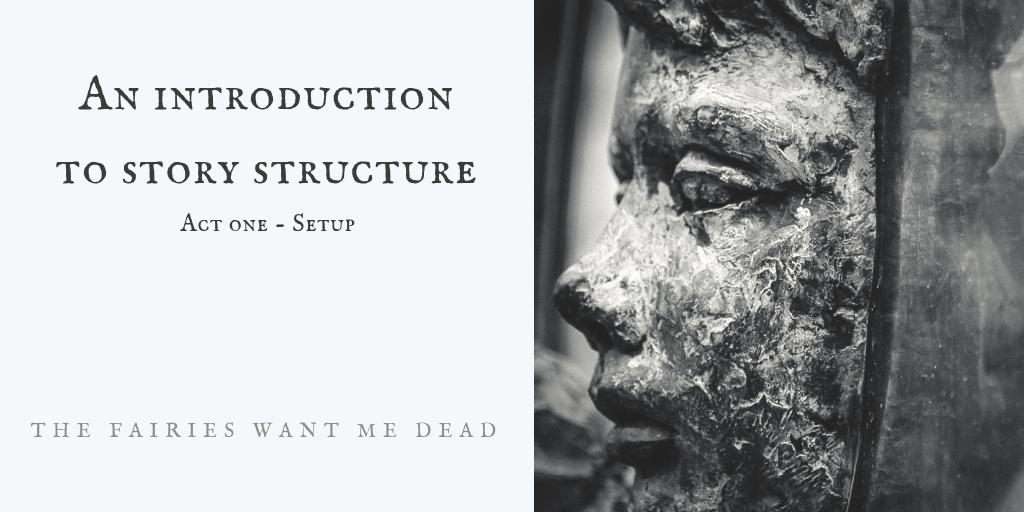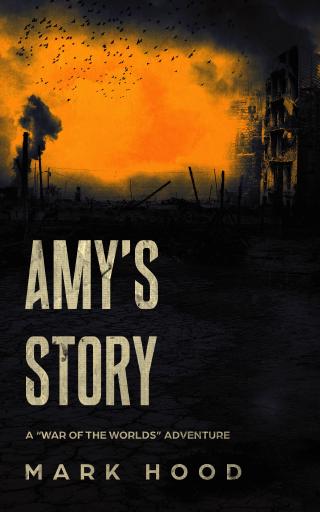This is the first in a short series of posts about Story Structure. Obviously as someone writing their first novel it’s not something in which I’m claiming to be an expert, but an understanding of basic story structure forms an important part of crafting a compelling, readable, and satisfying story.
This is a series of posts - now completed - which you can read in full here:
- Part 1 - Overview
- Part 2 - The First Act (This article)
- Part 3 - The Second Act
- Part 4 - The Third Act
- Part 5 - Summary

As always this is advice gleaned from K.M. Weiland’s “Structuring Your Novel” . Much of the explanation I’m going to give in this series is adapted from this book, but I advise you to pick up a copy for yourself - it’s a very simple but in-depth guide.
So we understand the three-act structure now - to quickly recap:
- Act One: Setup
- Act Two: Conflict
- Act Three: Resolution
This post will explain the key plot points we need to hit in Act One.
In almost all situations, each act takes up approximately the same amount of space in the finished work. In a novel, it’ll be roughly 1/3 of the page count (or word count). In a movie it’ll be about 1/3 of the screen time. So here we are talking about the first 33% of your story.
What does that portion have to do, in order to set everything up? Firstly, we need to introduce your lead character, your setting, some or all of your supporting characters, the actual storyline that will be explored, all of this while developing a theme and encouraging your reader to keep going. Phew! Let’s break it down.
Hook
This is the start of the story - the opening scene, the first chapter and maybe even the very first line. It’s what will (as the name suggests) ‘hook’ your reader, make them want to read the next line, the next scene, the next chapter. It typically is right at the start, around 1% of the way in.
From here, we enter the ‘set-up’ phase, introducing your characters, their hopes & fears, what they want to gain and what they fear to lose.
Inciting Event
Also known as the ‘Call To Adventure’ - this is where the plot starts. Something shakes your lead character out of their normal existence and kick-starts the conflict that will occupy the rest of your novel.
This happens later, usually about half-way between the Hook and 1st Plot Point (see below). That puts it about 12% of the way through.
After this we’re in the ‘build-up’ to the main event - we get things ready for the conflict, reveal more of the story to come and increase the tension. There might well be a temptation for your lead character to walk away from the Adventure, but that won’t last long… as he reaches the:
First Plot Point
This can also be known as the ‘Key Event’ - the stakes are raised, the lead character can’t walk away any longer and has to engage with the rest of the conflict.
This marks the end of act one, and the start of act two. As such it tends to show up just about 25% of the way through, and leads us up to the 33% of the first act.
As before, let’s explain these in more detail with a few examples.
Star Wars: A New Hope
Note that Luke (the main character) is introduced pretty late - which is unusual. Ordinarily you see them from the very start so you know who to root for.
Hook
We see a giant space battle, rebels fighting & dying, a princess captured and key plans smuggled away.
Setup
Luke has a humdrum existence, dreams about joining the academy and the rebellion but is trapped on his uncle’s farm.
The droids are purchased, and Luke has to stay home and clean them up.
Inciting Event
Luke stumbles across the message from Leia, and decides to go and meet Ben Kenobi to see if he knows Obi-Wan.
Build-Up
Ben tells Luke about the Force, his father, the rebellion - and Luke refuses the call, saying he needs to head home. He’s still in his regular life at this point, but we understand the stakes - the fate of the galaxy hangs in the balance.
First Plot Point
Luke discovers his aunt & uncle murdered by the Empire - he agrees to go with Ben to deliver the plans to the rebellion.
Despicable Me
Hook
The pyramid has been stolen, and we learn that super-villains exist.
Setup
We see Gru and the minions in their daily lives, learn that he wants to get back on top of the heap. Gru is denied the loan and has to steal the shrink ray to prove his worth.
Inciting Event
He tries and fails to steal the shrink ray, seeing it go to his rival instead.
Build-Up
We see more of Gru’s planning and attempts to steal the shrink ray from Vector’s fortress, all ultimately fruitless.
First Plot Point
He adopts the three girls in order to reach his goal.
Indiana Jones and the Raiders of the Lost Ark
Hook
We see Indy stealing an idol, defeating complex traps and escaping certain death more than once, only to lose the idol to a greedy adversary.
Setup
We learn he’s collecting for museums, working at a university, and overwhelmed by the administration he has to do. He’s much less comfortable in those surroundings than he was in the temple previously.
Inciting Event
Government agents inform Indy that they need him to recover the Ark of the Covenant before the Nazis do.
Build-Up
Indy goes to Marian, to recover the amulet needed to locate the ark. We see who’s chasing after the Ark as they also scramble for the amulet.
First Plot Point
Marian’s bar is burned down, she & Indy travel to Cairo to assemble their own team to find the Ark.
Again these are well-known examples which hopefully help illustrate the ideas of the key points of the first act.
In each of them you can see how character is introduced, goals and fears explained and theme set up. Secondary characters and adversaries are brought into play and the stakes are outlined. Consider how your own work can achieve these many vital things while hitting the beats that a good story does.
If you want to know when the next blog post is done, sign up to the mailing list below and I’ll let you know!


![On Story Structure [Part 2 - The First Act] On Story Structure [Part 2 - The First Act]](/2018/11/04/on-story-structure-part-2-the-first-act/ActOne_hu57757d969d2a3fefd17ed1b7ed5a4088_413199_320x0_resize_q75_bgffffff_box_3.jpg)